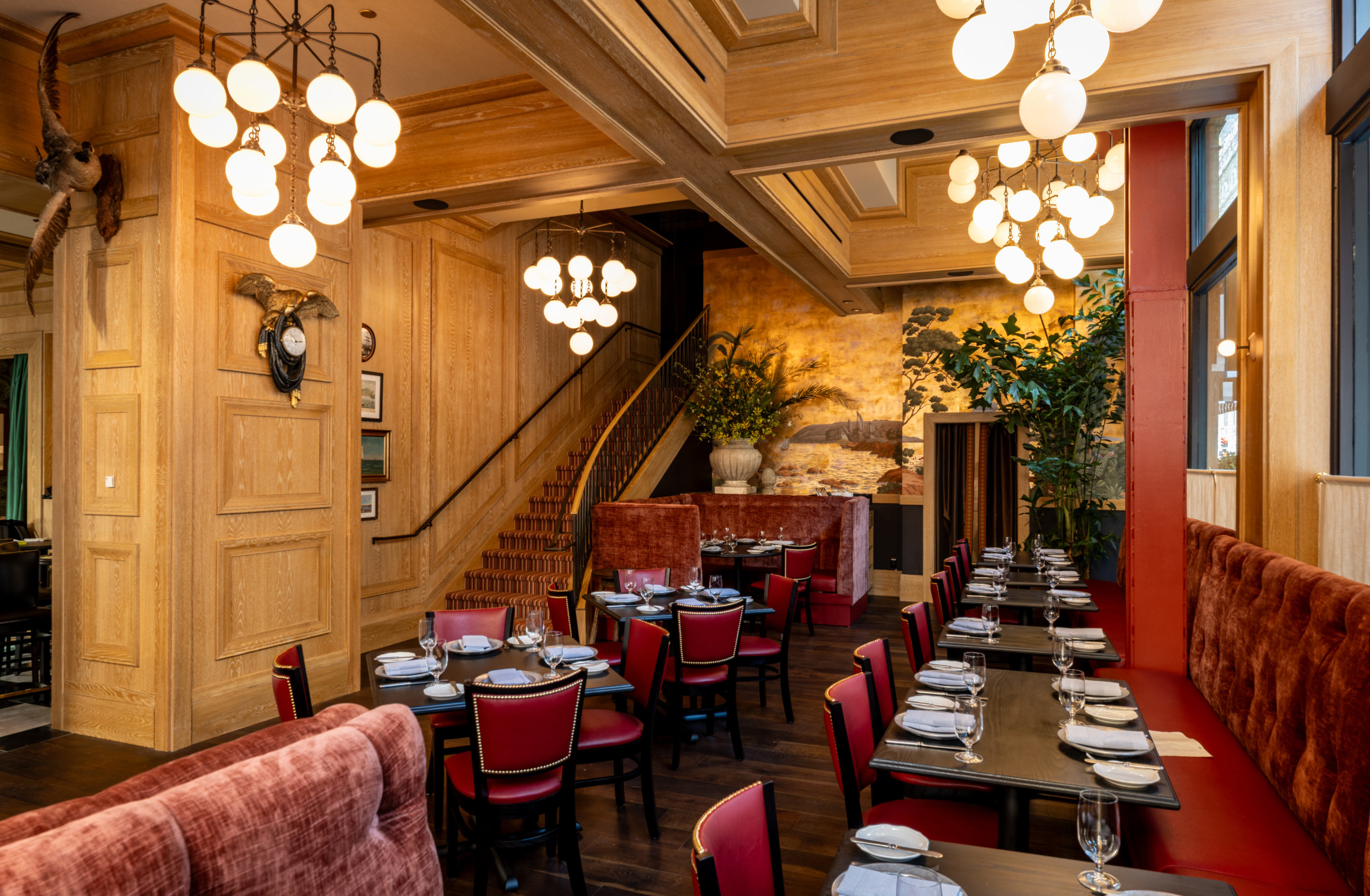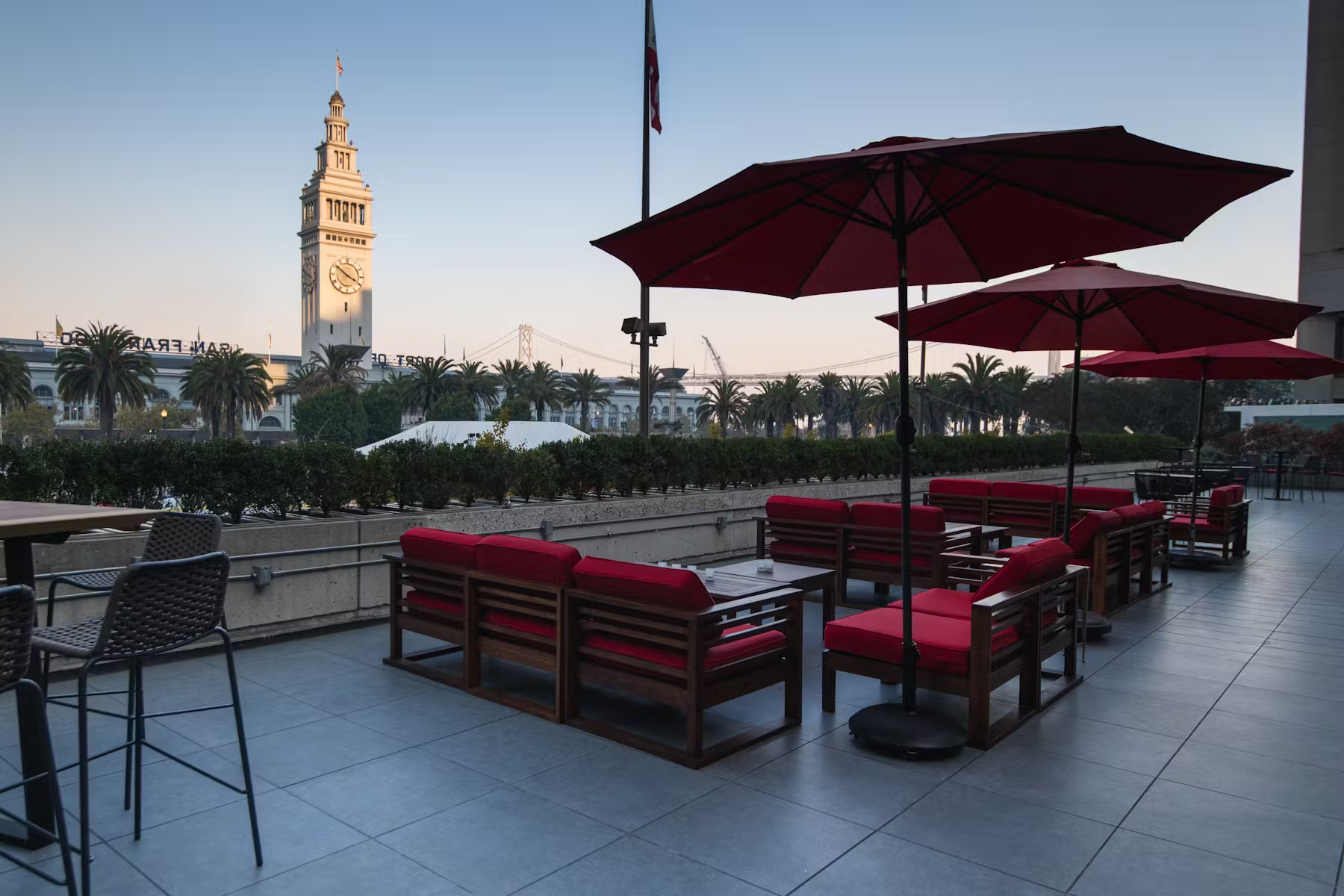
In July 2025, a mid-sized San Francisco bistro achieved something remarkable: a 15% increase in table turnover rates and a 20% revenue jump, all through intelligent reservation optimization. This wasn't the result of hiring more staff or expanding floor space—it was the power of AI-driven reservation management working behind the scenes to maximize every seating opportunity.
The restaurant industry is experiencing a technological revolution, with AI making significant inroads into front-of-house operations (Forbes: How AI is Transforming Restaurants). Companies are not just managing bookings; they are engaging in natural conversations, handling multiple languages, and showcasing soft skills previously thought to be exclusive to humans (Forbes: How AI is Transforming Restaurants). The food and beverage AI market is currently valued at $9.68 billion and is expected to reach $49 billion over the next five years (Hospitality Tech).
This case study breaks down the methodology, algorithm logic, and RevPASH mathematics that drove these impressive results, providing replicable tactics that any restaurant can implement to mirror similar success.
Revenue Per Available Seat Hour (RevPASH) has become the gold standard metric for restaurant profitability. Unlike traditional metrics that focus solely on covers or average check size, RevPASH considers the time element—how efficiently you're using your most valuable asset: table space.
The San Francisco bistro faced common industry challenges:
By 2027, researchers project a 69% increase in the use of AI in restaurants (Apiko). Early adopters are already leveraging technology to gain competitive advantages, with AI being integrated into various facets of restaurant business to enhance customer satisfaction and streamline operations (Hospitality Tech).
Traditional reservation systems operate on fixed time slots—typically 90 or 120-minute windows. The AI optimization approach introduced dynamic buffer zones that adjust based on:
The algorithm created flexible buffer zones ranging from 15 to 30 minutes between reservations, automatically adjusting based on these variables. This seemingly small change eliminated the rigid "one-size-fits-all" approach that was leaving money on the table.
The pacing algorithm integrated with existing POS systems to monitor kitchen timing and table status in real-time. Key components included:
Kitchen Integration Points:
Table Status Monitoring:
This integration allowed the system to predict table availability with 85% accuracy up to 45 minutes in advance, enabling proactive walk-in accommodation and reservation adjustments.
Perhaps the most impactful component was the walk-in optimization engine. Rather than simply telling walk-in guests "we're fully booked," the system:
Restaurants with established training procedures are particularly well-positioned to see quick returns on investment in AI hosts, leveraging internal expertise to implement and support the technology (Hostie AI).
The reservation optimization system operates on a multi-layered decision tree that processes hundreds of variables simultaneously:
Incoming Reservation Request
├── Party Size Analysis
│ ├── 2-person: Apply 65-minute base duration
│ ├── 3-4 person: Apply 85-minute base duration
│ └── 5+ person: Apply 105-minute base duration
├── Time Slot Evaluation
│ ├── Peak Hours (6-8 PM): Add 15-minute buffer
│ ├── Shoulder Hours (5-6 PM, 8-9 PM): Standard buffer
│ └── Off-Peak: Reduce buffer by 10 minutes
└── Availability Confirmation
├── Direct Slot Available: Confirm immediately
├── Adjacent Slot Conflict: Offer alternative times
└── No Availability: Add to waitlist with prediction
The system continuously learns from actual dining patterns, adjusting its predictions based on:
AI technology is increasingly being used in restaurant industry, with AI hosts handling customer calls and seeing "unbelievable, crazy growth" according to industry experts (Ars Technica). However, there are challenges with AI hosts, including latency and non-deterministic behavior, particularly when conversations veer off script (Ars Technica).
Pre-AI Implementation:
Post-AI Implementation:
| Metric | Before AI | After AI | Improvement |
|---|---|---|---|
| Table Turns/Peak | 1.97 | 2.27 | +15% |
| Utilization Rate | 78% | 89% | +14% |
| Walk-in Accommodation | 12% | 28% | +133% |
| Average Wait Time | 45 min | 23 min | -49% |
| Peak Revenue | $10,459 | $12,551 | +20% |
The mathematics reveal that the 15% table-turn improvement, combined with better utilization and increased walk-in accommodation, created a compounding effect that delivered the 20% revenue increase.
Traditional reservation systems operate in binary mode—either a table is available or it isn't. This approach was costing the bistro approximately $2,400 per week in lost walk-in revenue.
Pre-AI Walk-in Scenario:
The AI system transformed walk-in management by providing real-time availability predictions:
Post-AI Walk-in Scenario:
This approach increased walk-in accommodation from 12% to 28%, representing an additional $9,600 in monthly revenue.
AI models trained cameras can detect when a table has been vacated but not cleared, automatically alerting staff to take action, enabling faster table turns and minimizing guest wait times (Restaurant Technology News).
Required Data Points:
Analysis Framework:
Dynamic Buffer Sizing:
Implementation Tips:
POS Integration Requirements:
Staff Training Components:
In existing implementations, AI hosts are generating additional revenue of $3,000 to $18,000 per month per location, up to 25 times the cost of the AI host itself (Hostie AI).
The successful implementation required integration with existing restaurant technology:
Reservation Management:
POS System Integration:
Communication Channels:
AI is becoming a mainstream part of restaurant operations, with restaurant chains reporting massive time and cost savings (Apiko). The technology is not about futuristic robots but about smart, behind-the-scenes tools that work to make restaurants more profitable and efficient (Apiko).
Challenge 1: Staff Resistance to Change
Challenge 2: System Integration Complexity
Challenge 3: Guest Communication
Based on historical no-show rates (averaging 8% for this bistro), the AI system implements controlled overbooking:
This strategy increased overall utilization by an additional 4% while maintaining service quality.
While not implemented in this case study, the framework supports dynamic pricing based on demand:
For restaurant groups, the system can optimize across multiple locations:
Major restaurant chains are already implementing AI solutions, with Dine Brands (parent company of Applebee's and IHOP) announcing plans to implement artificial intelligence in their restaurants, testing Voice AI Agents to handle customer orders over the phone (Newo AI).
| KPI | Baseline | Target | Achieved | Variance |
|---|---|---|---|---|
| Table Turns/Hour | 1.97 | 2.15 | 2.27 | +5.6% |
| RevPASH | $124.51 | $143.19 | $149.42 | +4.4% |
| Walk-in Conversion | 12% | 20% | 28% | +40% |
| Average Wait Time | 45 min | 30 min | 23 min | -23% |
| Guest Satisfaction | 4.2/5 | 4.4/5 | 4.6/5 | +4.5% |
Direct Revenue Gains:
Cost Considerations:
ROI Calculation:
Hostie pricing starts at $199 a month, making it accessible for restaurants of various sizes (Hostie AI). What originally started as a solution to help reduce tension has quickly grown into something much bigger (Hostie AI).
Early adopters of AI reservation optimization are creating significant competitive advantages. As the technology becomes more widespread, restaurants without these capabilities will find themselves at a distinct disadvantage.
Current Market Penetration:
Projected 2026 Adoption:
In just a couple of years, there will hardly be any business that hasn't hired an AI employee (Hostie AI).
Next-Generation Features:
Virtual assistants and AI bots are being used to handle routine inquiries like menu details, loyalty queries, and order tracking, freeing up human staff for more complex service tasks (Restaurant Technology News).
After integrating with partner establishments such as Flour + Water and Slanted Door, AI systems now handle over 80% of their guest communications automatically (Hostie AI). Teams have reported growing customer satisfaction in the dining experience and customer service after using AI solutions (Hostie AI).
The San Francisco bistro's 15% table-turn uplift and 20% revenue increase demonstrate the transformative power of AI-driven reservation optimization. This isn't just about technology—it's about fundamentally reimagining how restaurants can maximize their most valuable asset: time.
The methodology, algorithms, and tactics outlined in this case study provide a replicable framework for any restaurant looking to achieve similar results. The key lies not in the complexity of the technology, but in the systematic approach to understanding your operation's unique patterns and optimizing accordingly.
As the restaurant industry continues to evolve, AI will become less of a competitive advantage and more of a necessity for survival. The question isn't whether to implement these technologies, but how quickly you can adapt them to your specific operation.
The mathematics are clear: restaurants that embrace AI-driven optimization will capture more revenue from the same physical space, provide better guest experiences, and operate more efficiently. Those that don't will find themselves increasingly unable to compete in an industry where margins are thin and every table turn matters.
Artificial intelligence is making significant inroads into restaurant front-of-house operations, with companies engaging in natural conversations, handling multiple languages, and showcasing soft skills previously thought to be exclusive to humans (Hostie AI). The future of restaurant operations is here, and it's powered by intelligent systems that work tirelessly to maximize every seating opportunity.
For restaurant operators ready to take the next step, the path forward is clear: start with data, implement systematically, and optimize continuously. The 15% table-turn uplift achieved in San Francisco is just the beginning of what's possible when AI meets hospitality.
The bistro implemented AI-driven reservation management that used dynamic buffer zones, real-time pacing algorithms, and intelligent walk-in accommodation. The system analyzed historical data patterns, customer behavior, and real-time dining flows to optimize seating schedules and minimize gaps between reservations, resulting in more efficient table utilization.
RevPASH (Revenue Per Available Seat Hour) is a key performance metric that measures how effectively a restaurant generates revenue from its seating capacity over time. AI reservation systems optimize RevPASH by analyzing dining patterns, predicting no-shows, and dynamically adjusting reservation slots to maximize both table turnover and revenue per seat.
Yes, the tactics demonstrated in this case study are scalable and replicable for restaurants of various sizes. The core principles of dynamic buffer zones, real-time pacing, and data-driven walk-in management can be adapted using modern restaurant AI platforms. Many solutions now offer affordable AI-powered reservation and operational optimization tools specifically designed for smaller establishments.
AI chatbots and voice assistants handle routine reservation inquiries, menu questions, and booking modifications, freeing up staff for complex service tasks. According to industry reports, platforms like Slang AI and similar voice assistants are transforming restaurant calls into revenue opportunities by directing guests to online ordering or reservation booking, while reducing labor costs and improving response times.
The food and beverage AI market is valued at $9.68 billion and expected to reach $49 billion within five years. AI is being integrated across restaurant operations including personalized menu recommendations, inventory management, labor scheduling, and customer service. Companies like Hostie are leading this transformation by providing comprehensive AI solutions that enhance both operational efficiency and customer experience.
Essential metrics include table turnover rate, RevPASH (Revenue Per Available Seat Hour), no-show percentages, average wait times, and customer satisfaction scores. The San Francisco bistro case study demonstrates that tracking these metrics alongside AI implementation can reveal significant improvements in operational efficiency and revenue generation, with some restaurants seeing up to 20% revenue increases.
RELATED


